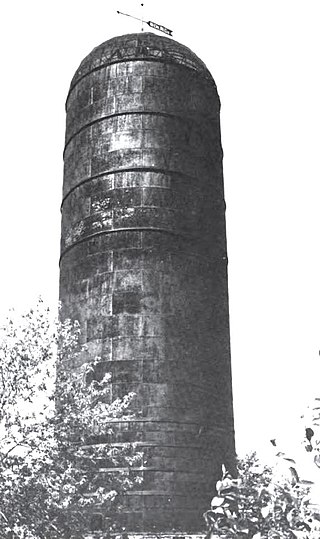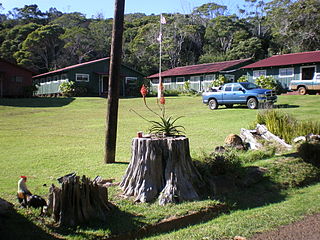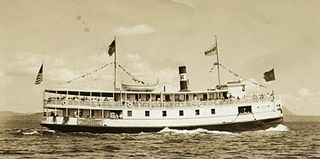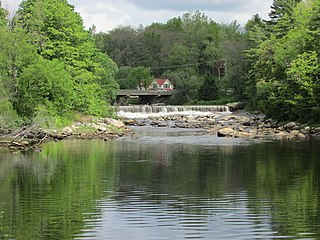
Saint Anthony Falls, or the Falls of Saint Anthony located at the northeastern edge of downtown Minneapolis, Minnesota, is the only natural major waterfall on the Mississippi River. Throughout the mid-to-late 1800’s, various dams were built atop the east and west faces of the falls to support the milling industry that spurred the growth of the city of Minneapolis. In 1880, the central face of the falls was reinforced with a sloping timber apron to stop the upstream erosion of the falls. In the 1950s, the apron was rebuilt with concrete, which makes up the most visible portion of the falls today. A series of locks were constructed in the 1950s and 1960s to extend navigation to points upstream.

C.A. Thayer is a schooner built in 1895 near Eureka, California. The schooner has been preserved and open to the public at the San Francisco Maritime National Historical Park since 1963. She is one of the last survivors of the sailing schooners in the West coast lumber trade to San Francisco from Washington, Oregon, and Northern California. She was designated a National Historic Landmark on 13 November 1966.

The Bridal Veil Falls is a waterfall located on Bridal Veil Creek along the Columbia River Gorge in Multnomah County, Oregon, United States. The waterfall is accessible from the historic Columbia River Highway and Interstate 84. Spanning two tiers on basalt cliffs, it is the only waterfall which occurs below the historic Columbia Gorge Scenic Highway. The Bridal Veil Falls Bridge, built in 1914, crosses over the falls, and is listed on the National Register of Historic Places.

The Bridgeport Covered Bridge is located in Bridgeport, Nevada County, California, southwest of French Corral and north of Lake Wildwood. It is used as a pedestrian crossing over the South Yuba River. The bridge was built in 1862 by David John Wood. Its lumber came from Plum Valley in Sierra County, California. The bridge was closed to vehicular traffic in 1972 and pedestrian traffic in 2011 due to deferred maintenance and "structural problems".

The Warner Valley Ranger Station, also known as the Warner Valley Patrol Cabin and Quarters 304, is located in the southern portion of Lassen Volcanic National Park, on the access road to the Drakesbad Guest Ranch. Built in 1926, it is unusual in its choice of construction method. While it resembles a log cabin, it was built using stacked milled 2x6 lumber to form the walls. It is the only such building known to have been built in this manner in the western regions of the National Park Service system. The interlocking boards extend past each other at the corners, forming a decorative detail.

The Village of East Davenport, also known simply as The Village, is located along the Mississippi River on the southeast side of Davenport, Iowa, United States. It was listed as a historic district on the National Register of Historic Places in 1980 as the Davenport Village. At the time of its nomination it included 145 contributing properties, most of which were working-class housing.

The Marine Mill, established in 1839, was the first commercial sawmill in what became the U.S. state of Minnesota. Now in ruins, it is currently a historic site managed by the city of Marine on St. Croix in partnership with the Minnesota Historical Society. It was listed on the National Register of Historic Places as the Marine Mill Site in 1970 for having state-level significance in the themes of exploration/settlement, industry, and transportation. It was nominated for being the birthplace of the region's seminal industry—lumbering—and a major landing on its crucial transportation route, the St. Croix River. The site is also a contributing property to the Marine on St. Croix Historic District.

The Garland Mill is a historic sawmill on Garland Road in Lancaster, New Hampshire. Built about 1860, and repeatedly modified to adapt to growth and new technology, it is the only water-powered sawmill in the state. The property was listed on the National Register of Historic Places in 1982.

The West Hill Covered Bridge, also known as the Crystal Springs Covered Bridge is a wooden covered bridge that crosses West Hill Brook on Creamery Bridge Road in Montgomery, Vermont. It is one of six surviving 19th-century bridges built in Montgomery by the brothers Sheldon & Savannah Jewett. It was listed on the National Register of Historic Places in 1974.

The Bay de Noquet Lumber Company Waste Burner was an industrial waste burner located at the south end of River Street in Nahma Township, Michigan. It was built to burn waste wood and bark from the nearby sawmill; until 2019 it was the only known example of this type of waste burner surviving in Michigan, and it was listed on the National Register of Historic Places in 2011. The burner collapsed in 2019, and was removed from the National Register in 2020.

Civilian Conservation Corps Camp in Kokeʻe State Park is located at Hawaii Route 550, in Waimea, on the island of Kauai, in the U.S. state of Hawaii. It was built in 1935 with lumber that was put into the saltwater and floated to the shore at Port Allen, the seawater adding a natural termite protection to the lumber. The camp was in continual use for forest management, until Hurricane Iwa devastated it in 1982. In the 1990s it was restored through the efforts of the non-profit Hui O Laka environmental group, and is currently open to the public. It was added to the Hawaiʻi Register of Historic Places and the National Register of Historic Places on December 20, 1996.

The Nashua Manufacturing Company Historic District in Nashua, New Hampshire, is a historic district that was listed on the National Register of Historic Places (NRHP) in 1987. It encompasses an area just west of downtown Nashua, roughly located along the southern bank of the Nashua River, bordered on the west side by Mine Falls Park, on the south side by the Nashua River canal, up to Ledge Street, and from the east side by Factory, Pine and Water streets, up to the Main Street bridge.

The Charles Mears Silver Lake Boardinghouse is a boardinghouse located at the outlet of Silver Lake, near Mears, Michigan. It is one of the few remaining structures built to serve the lumbering industry, which was Michigan's predominant industry in the 19th century. It was designated a Michigan State Historic Site and listed on the National Register of Historic Places in 1986.

The Katahdin is a historic steamboat berthed on Moosehead Lake in Greenville, Maine. Built in 1914 at the Bath Iron Works, it at first served the tourist trade on the lake before being converted to a towboat hauling lumber. It was fully restored in the 1990s by the nonprofit Moosehead Maritime Museum, and is again giving tours on the lake. One of the very few surviving early lake boats in Maine, and the oldest vessel afloat built at Bath, it was listed on the National Register of Historic Places in 1978.

Libby's No. 23 is a historic sail-powered fishing vessel, now on display at the Lake Clark National Park and Preserve visitors center in Port Alsworth, Alaska. Built in 1914, she served in the salmon fishery of Bristol Bay until about 1951, owned by the Libby's cannery and worked by two-man crews. She is 29 feet 6 inches (8.99 m) long, with a beam of 9 feet 2 inches (2.79 m) and a depth of 4 feet (1.2 m). Its bow and stern are roughly the same shape, giving the style its name. Despite its use for freight and recreation between 1953 and 1997, the boat has retained much of its original equipment, and was fully restored by the National Park Service between 1998 and 2005, acquiring replacement parts from similar boats and removing an added motor. It is normally rigged with a mainsail and spritsail, but these are only raised when the boat is taken out of its custom-built boathouse.

The Frankfort Dam impounds Marsh Stream near the center of Frankfort, Maine. Built in 1905 out of granite probably quarried at the nearby Mount Waldo Granite Works to provide power to local mills, it served for many years as a key element of the local economy. Its spillway has been adapted for use by a hydroelectric power station. The dam was listed on the National Register of Historic Places in 2003.

Arcola Mills is a historic house in the unincorporated community of Arcola, Minnesota, United States. Built in 1847, it is considered the third-oldest and largest all-wood-frame house still standing in Minnesota. It was the home of brothers Martin and John Mower, who established one of the first sawmills on the St. Croix River and the community around it. The house and the remnants of the nearby mill were listed on the National Register of Historic Places in 1980 as the John and Martin Mower House and Arcola Mill Site for having local significance in the themes of architecture, exploration/settlement, and industry. The property was nominated as an "excellent example" of Greek Revival architecture and for its association with the region's early settlement and lumber industry. The property now operates as a non-profit event and education center.

The Green River Crib Dam is a historic 19th-century dam on the Green River in western Guilford, Vermont. Built about 1811, it is a reminder of the modest industrial enterprises once conducted in the area using the water power it provided, and is one of the state's few surviving crib dams. It was listed on the National Register of Historic Places in 1995.

The East Vassalboro Grist and Saw Mill is a historic mill complex in East Vassalboro, Maine. Established in the late 18th century, it is one of the oldest water-powered mills in the state, with a working complement of grist and lumber milling equipment. It was listed on the National Register of Historic Places in 1982.

The Missouri Lumber and Mining Company (MLM) was a large timber corporation with headquarters and primary operations in southeast Missouri. The company was formed by Pennsylvania lumbermen who were eager to exploit the untapped timber resources of the Missouri Ozarks to supply lumber, primarily used in construction, to meet the demand of U.S. westward expansion. Its primary operations were centered in Grandin, a company town it built starting c. 1888. The lumber mill there grew to be the largest in the country at the turn of the century and Grandin's population peaked around 2,500 to 3,000. As the timber resources were exhausted, the company had to abandon Grandin around 1910. It continued timber harvesting in other parts of Missouri for another decade. While some of the buildings in Grandin were relocated, many of the remaining buildings were listed on the National Register of Historic Places in 1980 as part of the state's historic preservation plan which considered the MLM a significant technological and economic contributor to Missouri.






















